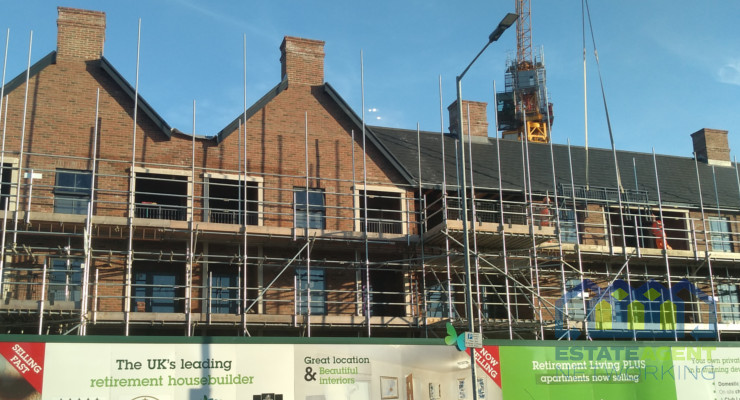Not all doom and gloom’ in the residential land market
March 7, 2025
With uncertainty in the residential land market over the past few years and a bit of a shaky start to the year so far, it has been a tough playing field for UK housebuilders.
But residential development expert Billy Poulter, a Manchester-based partner in the commercial property team at Clarke Willmott, specialising in residential development says it’s not all doom and gloom and remains cautiously optimistic for the rest of 2025 and beyond.
“Inevitably it will take time for the market to bounce back and for housebuilders to regain the right levels of confidence to buy land at the fast pace we’ve seen in the past,” said Billy, a partner in the Housebuilder division at national law firm Clarke Willmott LLP.
“We’ve seen quite a lot of uncertainty in the market over the past few years owing to some tough economic conditions involving rising inflation, hikes in interest rates from the Bank of England and mortgage rates increasing at record pace.
“On a more positive note, reports from Zoopla have shown a surge in buyer demand in the housing market towards the end of last year, which seems to correlate with a recent reduction in mortgage rates.
“Whilst the information is based on the sales market as a whole (rather than new build sales), the increase in sales demand will be good news for our housebuilder clients as they can see the market reacting well to slightly better economic conditions. Zoopla are also reporting that affordability remains a constraint on buying pressure, which could keep price inflation in check.”
So what are Billy’s thoughts for the rest of 2025?
“We don’t expect to see a big hike in house prices and land values in 2025 due to affordability remaining a key factor for buyers. With the cost of mortgage debt stabilising and with buyers becoming familiar with a new norm, we hope to see housebuilder buying activity increase in 2025 and beyond.
“Another major issue facing housebuilders in recent years is the rise in build costs. In 2022 and 2023, housebuilders saw a hike in build costs, reaching over 10% in 2022. The annual growth rate towards the end of 2024 was circa 2%, which has improved sentiment somewhat, although the increases seen in 2022 to 2023 will have at that point already had a significant impact on housebuilders. The BCIS expects building materials to rise by circa 15% in the next five years.
“Additionally, planning delays are still causing some challenging market conditions. According to a Savills report, 31% fewer homes were granted planning permission in the 12 months prior to June 2024. The government has pledged to improve the planning system which is music to everyone’s ears in the development world. Whilst that may improve sentiment, in order to see meaningful change, it will of course take time.”
Billy says there are several alternative delivery models gaining popularity.
“One particular model that appears to have stood out in recent years is the Countryside/Vistry Partnership model (Countryside are part of the Vistry group). Considering the market conditions, Vistry has continued to acquire land at pace. Vistry aim to secure development partners (Registered Providers and PRS Operators) at an early stage of a land transaction and generally 50% of sites are sold to partners at the same time that Vistry acquires the land. This not only offers cash flow benefits in selling half of the site on day one, but it also brings additional affordable housing to the market in excess of obligatory section 106 policy affordable units.
“The multi-tenure approach to all sites seems to have been an attractive model. There has also been a big drive for affordability in recent years, so the delivery of more affordable units in the market is a positive sign. Looking forward, we may see other competitors trying to emulate this model which seems to be working well for Vistry.
“Additionally, one of the highlights of 2024 was the announcement of a new private-public housebuilding entity called the Made Partnership, which is made up of Barratt (one of the UK’s largest developers), Homes England (a public body who plays a big part in delivering the government’s housing agenda) and Lloyd’s Banking Group. Made Partnership will act as a master developer for multiple large-scale residential-led developments ranging from 1,000 to 10,000 homes.
“It is hoped that the Made Partnership will not only deliver housing numbers, but also create thriving communities and boost economic growth. We know that the government’s target of building 1.5 million homes in this office is ambitious and many will place doubt on whether this target is achievable. Looking forward with a positive hat on, with Barratt’s development expertise and Homes England’s ability to access land and unlock sites for development this is a signal of the government’s intention to work collaboratively with the private sector to deliver housing at scale and pace. We look forward to seeing some schemes come forward in the not-too-distant future.”
You May Also Enjoy
Housing Insight Report October 2025
The latest figures reveal a steadier, more confident property market, with committed buyers driving sales and rental arrears falling to their lowest level since 2022. In spite of slight dips in demand, rising stock levels and stabilising rents signal a sector gradually finding its balance. Residential sales Prospective buyer registrations dropped in October 2025 The…
Read More 9 luxury property features to impress Christmas guests
9 of the fanciest home features to impress your Christmas guests – And how much they’ll set you back As the festive season approaches and we prepare to welcome guests into our homes, Enness Global has identified nine of the most extravagant and fancy home features that define true luxury at Christmas. But impressing the…
Read More No acceleration in rental EPC improvements despite policy push
Rightmove’s 2025 Greener Homes Report reveals: Energy efficiency of homes continues to steadily improve, but slowly: Rental sector stock still more energy efficient than resale stock Both markets have seen a 3% year-on-year jump in proportion of homes with at least an EPC rating of C (58% of homes for rent, 46% of homes for…
Read More London renters making it onto the ladder without a deposit
Developers helping London renters onto the property ladder without a deposit, when the Government won’t The latest insight from London’s largest lettings and sales estate agent brand, Foxtons, has revealed that despite the Government providing no new support in the recent Budget for first time buyers, a growing collaboration between developers and lenders is helping…
Read More Prime London Sees Post-Budget Surge in £2m+ Listings
The latest research from prime London property experts, Jefferies London, reveals that, just two weeks on from the Autumn Budget and its newly announced prime property surcharges, an estimated 444 homes priced at £2m or more have been listed for sale across the capital. These new listings account for around one in 10 (9%) of…
Read More 2026 Will Test BTR’s Potential and Government’s Resolve
By Justine Edmonds, Head of Build to Rent / Leasing Strategies, LRG Throughout 2025 I have spent hours in meetings with and on discussion panels with institutional investors, developers and local authorities. And everything I’ve picked up on in the last year suggests that 2026 will be a crossroads for Build to Rent (BTR). The…
Read More 








